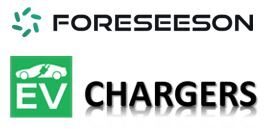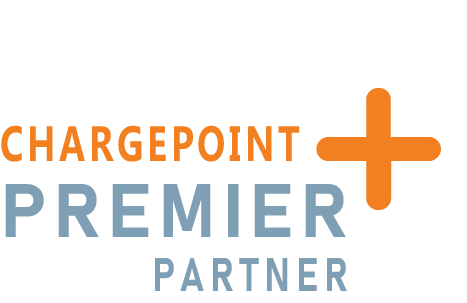CODE OF CONDUCT
CODE OF CONDUCT
Last updated: May 3, 2024
LABOUR
Foreseeson is committed to upholding human rights and treating all workers with dignity and respect, regardless of their employment status—whether they are suppliers, temporary, migrant, student, contract, direct employees, or other types of workers. Here are the labor standards we adhere to:
1. Prohibition of Forced Labor
Forced labor, in any form, is strictly prohibited. This includes bonded labor, indentured servitude, prison labor, or human trafficking. Workers must have unrestricted freedom of movement within company facilities. Employment agreements should be in simple and accessible language. Work must be voluntary, and employees are free to leave work or end employment with reasonable notice, as outlined in their contracts.
2. Young Workers
Child labor is not allowed at any stage of manufacturing. “Child” refers to anyone under 15 years, while “young worker” refers to anyone under 18 years. Young workers must not engage in hazardous tasks or operate machinery without proper supervision. Foreseeson supports workplace learning programs, providing support and training for student workers.
3. Working Hours
Working hours must not exceed legal limits set by British Columbia and Canadian labor laws. In emergencies, workweeks should not exceed 60 hours, including overtime. All overtime must be voluntary.
4. Wages and Benefits
Compensation must meet legal wage laws, including overtime pay and mandated benefits. Wage deductions for disciplinary reasons are prohibited. Workers should receive clear wage statements with each pay period. The use of temporary or outsourced labor must comply with legal limits set by British Columbia and Canada.
5. Non-Discrimination, Non-Harassment, and Humane Treatment
Discrimination or harassment based on race, gender, sexual orientation, or other protected characteristics is strictly prohibited. Disciplinary policies must be clearly defined and communicated to all workers. Reasonable accommodations for religious practices and disabilities must be provided.
6. Freedom of Association
Workers must be able to communicate openly with management, sharing ideas and concerns about working conditions and business practices without fear of retaliation. They have the right to associate freely and form unions, in accordance with labor standards of British Columbia and Canada.
HEALTH AND SAFETY
Foreseeson is committed to a safe and healthy workplace. A Health and Safety Committee monitors workplace conditions, receives feedback from workers, and promotes ongoing education to address health and safety issues. Key health and safety standards include:
1. Occupational Health and Safety
Health and safety hazards, such as chemical, electrical, and fire risks, must be identified, assessed, and mitigated. If risks remain, well-maintained personal protective equipment (PPE) and relevant educational materials must be provided. Gender-responsive measures, such as accommodating pregnant women and nursing mothers, are also implemented.
2. Preparedness
Emergency plans and response procedures must be in place to address potential emergencies. Regular drills should occur at least annually, or as required by local law. Plans must include emergency reporting, evacuation procedures, and recovery plans to minimize harm to life, environment, and property.
3. Occupational Injury and Illness
Procedures must be in place to manage and track occupational injuries and illnesses. Workers should be encouraged to report safety issues without fear of retaliation. They must have the right to remove themselves from harm and not return until the hazard is mitigated.
4. Industrial Hygiene
Worker exposure to chemical, biological, or physical hazards must be evaluated and controlled. If control measures aren’t sufficient, free PPE should be provided. Work environments must be regularly monitored for safety and hygiene, with ongoing programs to address risks.
5. Physically Demanding Work
Risks associated with physically demanding tasks, such as manual material handling and heavy or repetitive lifting, must be assessed and mitigated.
6. Machine Safeguarding
Production and other machinery must be evaluated for safety risks. Physical guards, interlocks, and barriers should be used where machinery poses injury risks.
7. Sanitation, Food, and Housing
Workers should have access to clean toilet facilities, potable water, and sanitary food preparation and storage. Worker dormitories should be clean and safe, with emergency egress, hot water, adequate lighting, and secured accommodations for personal items.
8. Health and Safety Communication
Workers must be provided with health and safety information and training in their language or a language they understand. Training should cover mechanical, chemical, electrical, fire, and physical hazards. Workers should feel safe to report health and safety concerns without retaliation.
ENVIRONMENT
Foreseeson integrates environmental responsibility into all business operations, aiming to minimize adverse effects on the environment and community. Our environmental standards include:
1. Environmental Permits and Reporting
All required environmental permits, approvals, and registrations must be obtained and kept current. Operational and reporting requirements must be followed.
2. Pollution Prevention and Resource Conservation
Pollutants and waste should be minimized or eliminated at the source through practices such as modifying production processes or using pollution control equipment. Resource conservation should be practiced through recycling, re-use, and other means.
3. Hazardous Substances
Hazardous chemicals, waste, and other materials must be properly labeled and managed to ensure safe handling, storage, and disposal.
4. Solid Waste
A systematic approach should be used to identify, manage, reduce, and responsibly dispose of or recycle solid waste.
5. Air Emissions
Air emissions must be monitored and treated before discharge to meet regulatory requirements. Compliance with the Montreal Protocol and applicable regulations is mandatory.
6. Materials Restrictions
All applicable laws and customer requirements regarding prohibited substances, including labeling for recycling and disposal must be followed.
7. Water Management
Water sources, use, and discharge must be tracked and monitored, with efforts to conserve water and prevent contamination. All wastewater must be treated before discharge or disposal.
8. Energy Consumption and Greenhouse Gas Emissions
Foreseeson has established a corporate-wide greenhouse gas reduction goal. Energy consumption and Scopes 1, 2, and significant Scope 3 emissions should be tracked, documented, and publicly reported. Participants must seek to improve energy efficiency and minimize emissions.
ETHICS
Foreseeson upholds the highest standards of ethics to meet social responsibilities and ensure business success. Ethical standards include:
1. Business Integrity
Integrity must be upheld in all business interactions, with zero tolerance for bribery, corruption, extortion, or embezzlement.
2. No Improper Advantage
Bribes or other means of obtaining improper advantage are prohibited. This includes direct or indirect promises, offers, or giving of value to obtain business or gain advantage.
3. Disclosure of Information
Business dealings must be transparent and accurately reflected in records. All information regarding labor, health, safety, and environmental practices must be disclosed in compliance with regulations. Falsification or misrepresentation is unacceptable.
4. Intellectual Property
Intellectual property rights must be respected, with technology transfer and know-how managed to protect IP and safeguard customer and supplier information.
5. Fair Business, Advertising, and Competition
Fair business practices, advertising, and competition must be maintained.
6. Protection of Identity and Non-Retaliation
Confidentiality and anonymity must be ensured for whistleblowers and employee complaints. A process should be in place for employees to raise concerns without fear of retaliation.
7. Responsible Sourcing of Minerals
Due diligence must be conducted on sourcing of minerals like tantalum, tin, tungsten, gold, and cobalt, consistent with OECD Guidance for Responsible Supply Chains.
8. Privacy
Reasonable privacy expectations for all stakeholders must be respected, with compliance with privacy laws when handling personal information.
MANAGEMENT SYSTEMS
To maintain compliance with laws and standards, Foreseeson shall establish an effective management system. This system must ensure conformance with the ESG code, and it should contain the following elements:
1. Company Commitment
Establish policy statements for human rights, health, safety, environmental, and ethical practices, endorsed by executive management. These statements should be made public and communicated to workers in a language they understand.
2. Management Accountability and Responsibility
Identify senior executives responsible for implementing the management system and review its status regularly.
3. Legal and Customer Requirements
Implement processes to understand and comply with applicable laws, regulations, and customer requirements, including this code.
4. Risk Assessment and Risk Management
Develop a process to identify, evaluate, and mitigate operational risks related to this code.
5. Improvement Objectives
Establish written performance objectives to improve social, environmental, and health and safety performance. Periodically assess performance against these objectives.
6. Training
Provide training for managers and workers to implement company policies, meet legal and regulatory requirements, and achieve improvement objectives.
7. Communication
Establish a process for clear and accurate communication about policies, practices, expectations, and performance to workers, suppliers, and customers.
8. Worker/Stakeholder Engagement and Access to Remedy
Develop processes for ongoing two-way communication with workers and stakeholders, encouraging feedback on operational practices. Ensure a safe environment for grievances without fear of retaliation.
9. Audits and Assessments
Conduct periodic self-evaluations to ensure conformity with legal and regulatory requirements, code content, and customer contractual requirements.
10. Corrective Action Process
Establish a process for timely correction of deficiencies identified by internal or external assessments, inspections, investigations, and reviews.
11. Documentation and Records
Maintain documentation and records to ensure regulatory compliance, while protecting privacy and confidentiality.
12. Supplier Responsibility
Communicate code requirements to suppliers and monitor their compliance. Implement corrective actions if needed.


